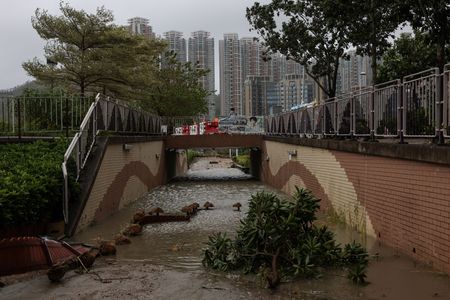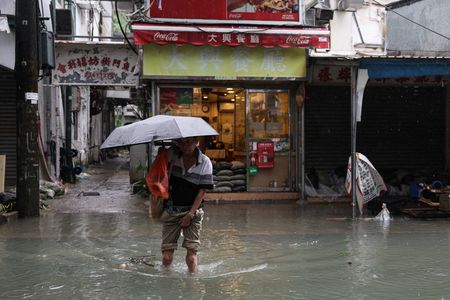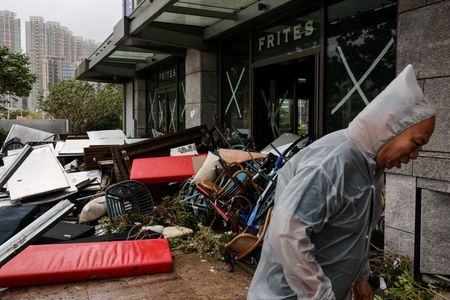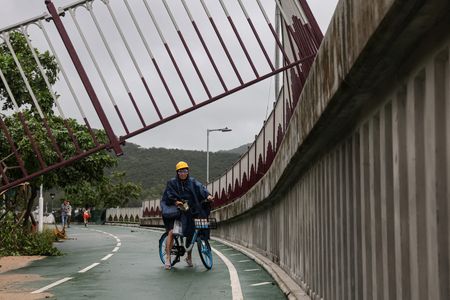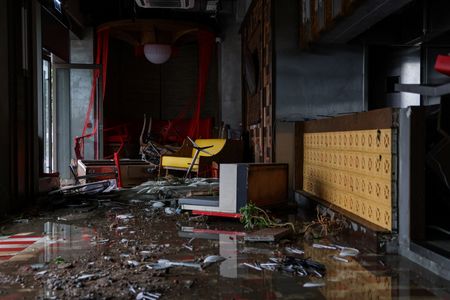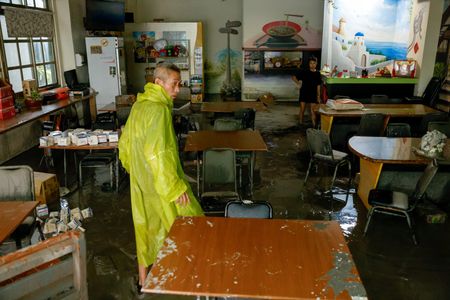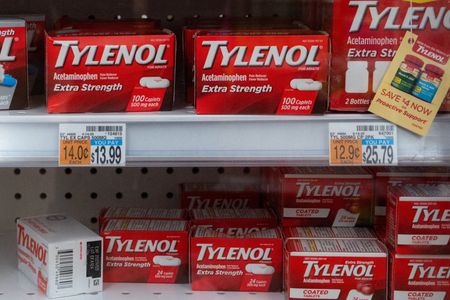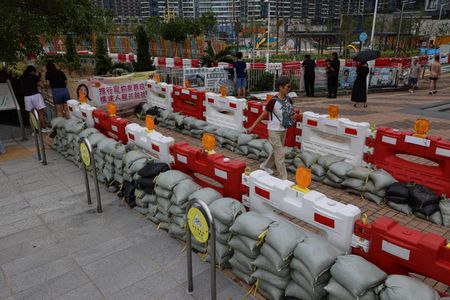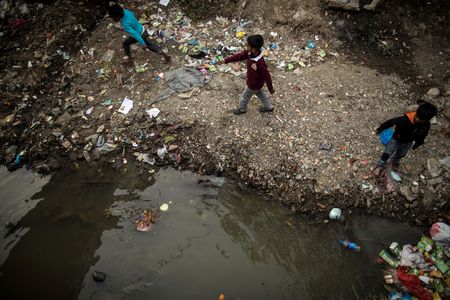HONG KONG (Reuters) -Super Typhoon Ragasa, the world’s most powerful tropical cyclone this year, lashed Hong Kong with hurricane-force winds and torrential rain on Wednesday, while heavy downpours in Taiwan resulted in the deaths of 14 people.
A barrier lake in Taiwan’s eastern Hualien county overflowed and sent a wall of water into a town, as heavy rains from Ragasa battered the island, the Taiwan fire department said on Wednesday.
Taiwan has been hit since Monday by the outer rim of Ragasa, which has brought torrential rains to the island.
In Hong Kong, huge waves crashed over areas of the Asian financial hub’s eastern and southern shoreline, submerging some roads alongside residential properties.
At the Fullerton hotel on the island’s south, videos on social media showed a torrent of seawater surged through its glass doors before flooding the floor area. Calls to the property remained unanswered on Wednesday.
In teeming Tseung Kwan O, built largely on reclaimed land, huge waves submersed swathes of waterfront promenade adjacent to towering residential towers.
At outlying islands including Lantau, home to the city’s international airport, widespread flooding was seen, swamping beaches and vegetation.
“Areas which were previously sheltered may become exposed…seas will be phenomenal with swells,” the observatory said.
Ragasa, packing winds of up to 200 kph (124 mph), will be closest to the city in the next few hours, around 100 km (60 miles) south of the densely populated territory.
RAGASA EXPECTED TO MAINTAIN SUPER TYPHOON STATUS
It is expected to maintain super typhoon intensity as it moves toward the coast of China’s Guangdong province, home to more than 125 million people, where it is expected to make landfall from midday (0400 GMT).
Ragasa swept through the northern Philippines on Monday and Taiwan on Tuesday.
The typhoon sparked panic buying this week in Hong Kong, with people crowding into supermarkets, leaving little on the shelves and in some cases queuing for hours to purchase goods amid fears that shops could be closed for two days.
As the typhoon approached, residents taped their windows in the hope of reducing the risk of injury from shattered glass.
Hong Kong issued the typhoon signal 10, its highest warning, early on Wednesday, which urges businesses and transport services to shut down.
Authorities also issued the Amber rainstorm signal, as heavy rain was expected to continue, with some streets already partially flooded, according to the South China Morning Post.
Authorities have warned of rising sea levels, saying they could be similar to those seen during Typhoon Hato in 2017 and Typhoon Mangkhut in 2018, both of which caused billions of dollars in damage.
“The water level will reach the maximum around noon (0400 GMT),” generally to around four metres (13 feet),” the observatory said.
A woman and her five-year-old son were swept into the ocean on Tuesday after watching the typhoon from the waterfront, according to the SCMP, which said they were now in intensive care after being rescued.
The government said it had opened 49 temporary shelters in various districts and 727 people have sought refuge at the shelters.
Hong Kong’s Stock Exchange will remain open. It changed its policy late last year to continue trading whatever the weather.
BROADER IMPACT
In the gambling hub of Macau next to Hong Kong, authorities also issued the No. 10 warning signal early on Wednesday. Casinos have been forced to shutter their gambling areas since Tuesday evening and are likely to remain closed on Wednesday. Guests are not able to leave their property if they are staying there.
One user on China’s Xiaohongshu app showed videos of doors being sealed at a casino resort to protect against the typhoon.
In Guangdong, authorities have evacuated over 770,000 people, state broadcaster CCTV said.
Schools and transport services including the high-speed rail have been shuttered, while flights have been cancelled at the region’s busiest airports in Guangzhou and Shenzhen.
China’s marine authority issued its highest ‘red’ wave warning for the first time this year, forecasting storm surges of up to 2.8 metres (9 feet)in parts of Guangdong province.
Guangzhou, Shenzhen, Foshan and Dongguan, the largest cities in Ragasa’s path, are home to around 50 million people.
The emergency management ministry dispatched tens of thousands of tents, folding beds, emergency lighting equipment and other rescue supplies on Tuesday, Chinese state media reported.
(Reporting by Anne Marie Roantree, Jessie Pang and the Hong Kong newsroom; Ben Blanchard in Taipei, Joe Cash in Beijing and the Beijing newsroom; Writing by Farah Master; Editing by Lincoln Feast, Michael Perry and Stephen Coates)

